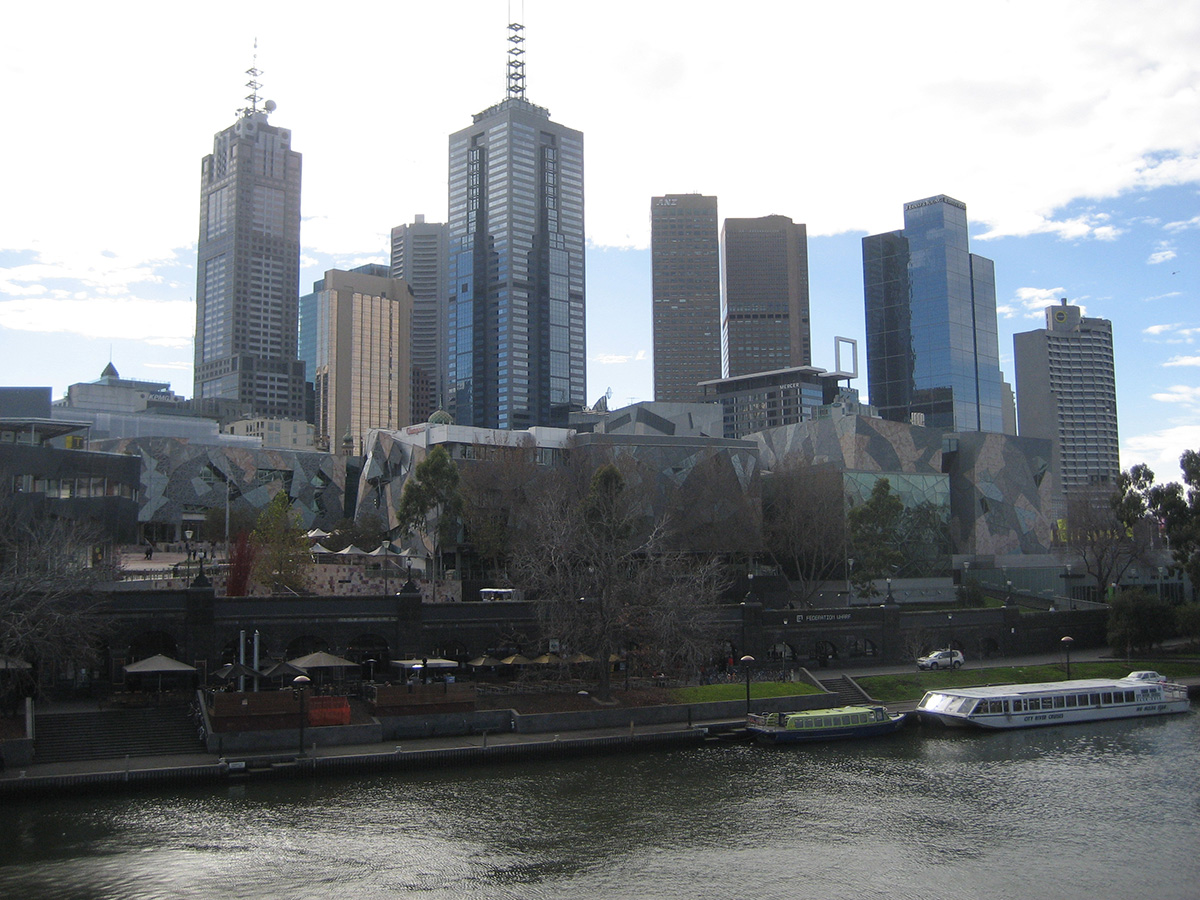Australia faces many of the same regulatory challenges as other nations do when it comes to utilizing drone technology for a variety of purposes. Being able to integrate drones safely into the air traffic management system is a top priority for stakeholders across the drone ecosystem while demonstrating safety to personnel on the ground and determining what it means to effectively counter rogue drone operators are also a major concerns to operators and organizations of all types. These issues should be familiar to commercial drone operators across the United States and Europe, but what’s especially revealing is to see how authorities there are working through these issues in such similar ways.
The Civil Aviation Safety Authority (CASA), which is the Australian national authority for the regulation of civil aviation,
has established drone safety rules that vary depending on whether someone is flying commercially or recreationally. Anyone flying a large drone, or that wants to fly outside of the standard operating conditions, needs to be
licensed and certified by CASA. These regulations have made a major impact on the development of the drone ecosystem across Australia, which continues to grow in both scale and scope.
Rob Sutton, Director,
Mirragin Unmanned Systems, has seen and been involved with all of these changes and developments. Based in Brisbane, Mirragin Unmanned Systems helps organizations implement their drone programs, and the process of doing so has enabled them to get a sense of the size and scope of the Australian drone ecosystem. That allowed them to compile a snapshot of the industry that we wanted to further explore in order to determine how these companies and topics are set to change and evolve in 2019 and beyond.
Jeremiah Karpowicz: Tell us a little bit about Mirragin Unmanned Systems and your history with drone technology. Rob Sutton: At Mirragin Unmanned Systems, we help Defence and Emergency Services organisations successfully implement their drone programs. We believe that Defence and Emergency Services personnel do an incredible job of providing security and assistance in times of need. We believe that they should not be put needlessly at risk in doing their jobs. People are priceless and robots are cheap, so by implementing drone technologies to do dull, dirty and dangerous jobs, we can minimise the risk to which Defence and Emergency Services personnel are exposed. We are particularly interested in helping to connect and grow Australia’s drone ecosystem, so that we can get to an unmanned future, faster
We have been involved with the Australian Army’s drone program since 2008. We have helped them to implement five different drone programs, across all sizes, helping them to become the largest and safest drone operator in Australia.

The Storey Bridge in Brisbane
I think we are very lucky in Australia for a number of reasons. Primarily, we have a world-leading regulatory authority. If you are able to demonstrate to CASA that you understand what you are doing, and have acted to analyse and mitigate all the risks to a sufficient degree, then they are very supportive.
Secondly, we are a country of vast distances, which means that there are many applications for drones that make economic sense. Managing power lines, mobile phone infrastructure, and rail lines are all examples where drones have made a difference.
Thirdly, we have a strong and growing ecosystem, as you can see from the drone map. We have over 1200 operators – obviously, we’ve not been able to include everyone. All of these together mean we can test and experiment with different applications, as we have a supportive regulator, sound business cases, and an ecosystem of operators, manufacturers and enabling organisations which mean that we can take the lead in unmanned technologies.
Are there specific industries you feel that Australia as a whole is taking the lead in with the deployment of commercial drone applications? Good examples of where we are taking the lead are agricultural and mining applications: areas where Australia has typically been very strong. Another leading area is ecosystem monitoring, for control of weeds, feral animals etc. or for monitoring environmentally sensitive areas such as the Great Barrier Reef. And of course, my area, Defence and Emergency Services. I believe we have one of the most effective military drone programs in the world, for our size. The Australian Army are now the largest and safest operator of drones in the country, taking soldiers out of harm’s way. The current Army capability manager, LTCOL Keirin Joyce, is a major driver for this. He is also the driving force behind the Military International Drone Racing Tournament. His energy and vision has been key in crystalising the embryonic industry and bringing funding for innovation in our ecosystem. Companies like UAV Vision, Defendtex, JAR Aerospace and others have been beneficiaries of this, and their growth drives growth elsewhere in the ecosystem.
In the United States, Part 107 lowered the barrier to entry for the commercial operation of drones, while the EU wants clear drone regulations in place by 2019. Are there upcoming developments with drone regulation in Australia that could redefine how commercial operators take to the sky? I think there will be more regulation at the smaller end of the market, to counter situations like the recent Gatwick airport drone scare. This will include things like mandatory drone registration, which may include licencing and regulation. This may put pressure on the smaller end of the market, which is already congested. I think the larger end of the market will continue to expand, particularly into areas like Beyond Visual Line of Sight. CASA are very effective in enabling this, and, if you can prove you know what you are doing and are doing it as safely as you can, they are supportive in exploring new use cases.
Your 2019 map of the Australian Drone Ecosystem is a great resource that details many of the companies operating in the country. Can you tell us a bit about how you broke this out in terms of which sections needed to be called out and whether a company appeared in one section versus another?The key criteria we used to establish the map was whether a company was having an impact on the ecosystem as a whole, and the proxy we used for this in many cases was visibility. We have a few national conferences, like the World of Drones Congress led by Dr. Catherine Ball, and the Drone Zone at the Avalon air show. If companies were visible at these conferences, and they were regularly in the media or had a strong social media presence, they were generally included. Then it was a matter of classifying the companies we were going to include, which was challenging as many are across multiple areas. We tried to focus on the area in which they were most proficient. If we weren’t sure, we asked the companies involved where they would like to be.
Are many of the companies focused strictly on Australia, or do they have a wider geographic focus and reach?There are a few international companies in the list, like Elbit and Insitu, both of whom are there because they are making a substantial impact in the local ecosystem. Others are selling product widely, like Orbital. Some already have a presence in multiple countries, like Scout Aerial who are very active in southern Africa, or Swoop Aero, who are delivering vaccines in Vanuatu. I think there is certainly an intention for most companies to expand geographically as they grow larger.
How do you see this ecosystem growing and changing over the next few years?I’d expect that the number of companies as a whole increase and some drop off as they merge or otherwise exit the market. I do think that we are on the cusp of a large growth in the market, so I’d definitely expect more entrants over time. I think rather than Army taking the lead as is the case at the moment, the civilian uses will become more obvious as people are educated about the benefits of drones and become less fearful about using them in their business, so I think large non-military users will start to come to the fore.
What do you think is the biggest missing element in this ecosystem? What sort of company or solution do you think would make this ecosystem more well rounded? One element which is missing from the current map is media and communications. There are two companies with a focus on telling the stories of the Australian industry which we will be adding in the next iteration. One of those is Drone Advice, which is an online drone magazine. The other is The Decisive Point, which is a strategic communications and reputation management firm, who have a primary focus on the drone market.
Other than that, I think the biggest element missing is research on the Australian drone industry itself, which will enable more collaboration and less waste as the industry will understand who the other players in the market are. This is partly why we’ve created the map, in an attempt to help to coordinate and grow the market, since a rising tide lifts all boats and makes us more competitive as a national industry.
What advice would you have for a company or organization that wants to see their logo showcased in this ecosystem in 2020 and beyond? Firstly, if a company wishes to be included on the map, I would advise them simply to reach out. The map is not meant to be exclusive, so if someone wishes to appear then we are happy to have that conversation.
For those companies who are looking to enter the market, or who have just started, I would say “just keep going”. The market is growing, there are huge potential applications and there is room for plenty more innovation and energy in the ecosystem. It is a great time to be involved!

The Melbourne CBD

















Comments